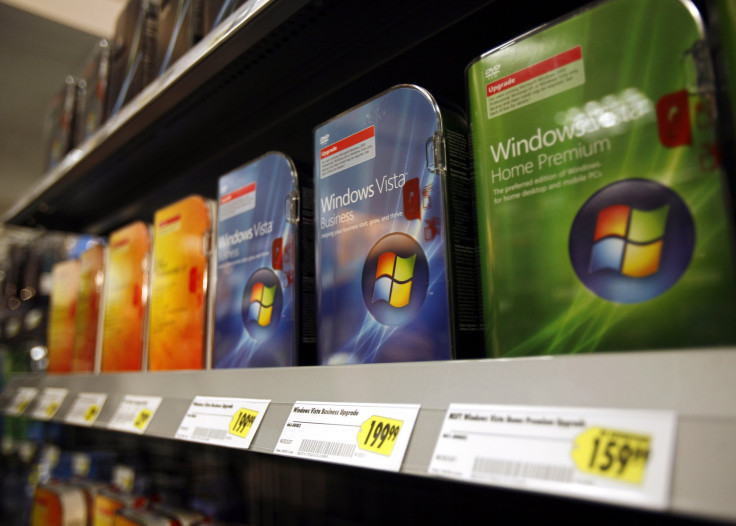Microsoft’s Six Biggest Blunders: You Thought Nokia Was A Bad Buy?

With Microsoft making significant layoffs in its phone business this week, it seems to outsiders like an uncharacteristic misstep. How did the tech giant misunderstand the mobile market so badly? As CEO Satya Nadella pulls the company away from unprofitable ventures launched by predecessor Steve Ballmer, it’s worth taking a look at some of the other major blunders that have hit the company. Did you know Microsoft made an MP3 player? Or that Windows Vista’s development was going so badly at one point that they hit the reset button? And that's just the beginning.
Nokia
With Nokia one of the few companies actually making Windows phones, Microsoft officials were a bit spooked that Nokia might switch platforms and move into the Android camp. Avi Greengart, research director at Current Analysis, explains that Microsoft paid a “strategy tax” by buying Nokia’s devices division in 2013 to make sure the hardware existed to run its software. “Why Microsoft paid over $7 billion for a money-losing business is mind-boggling, but what really hurt was the timing: Microsoft paid the strategy tax after Windows had already lost the mobile platform fight,” Greengart said.
Tablet PC
Nokia wasn’t the first time Microsoft pushed into the mobile sphere, nor was the iPad the first tablet computer. No, the snappily named Windows XP Tablet PC Edition helped define what Microsoft saw as the future of computing: computers that were more like books, except they had pens and you could touch the screens. The company had eight years between launching the tablet PC and the iPad arriving, and in that time hardware improved, laptops got lighter, and operating systems became more streamlined. None of that mattered in the end. Microsoft had fundamentally misunderstood how people would use tablets, and the iPad set the world alight from the word go.
Zune
Remember the Zune? If so, you’re one of the few who do. Five years after the iPod came out, Microsoft finally decided it had an answer to Apple’s runaway success. Available at launch in black, white and, er…brown, the Zune had some interesting features like Wi-Fi and a marginally bigger screen to set it apart from the iPod video. None of that mattered, and the launch of the iPhone a few months later did little to help. In 2009, three years after launching, it had a 2 percent share of the market according to NPD. The company finally pulled the plug in June 2012.

Ad Tech
In 2007, Microsoft decided it was time to jump into another industry it had waited far too long to join. And so it was advertising’s turn, an industry dominated in the online sphere by Google, with Microsoft buying aQuantive in 2007 to make its entry. In 2012, Microsoft took a $6.2 billion write-down on its ad tech investments. In 2013, the company sold Atlas Solutions, part of the aQuantive buyout, to Facebook. The Q4 2014 financial results showed display ads made up 15 percent of total ad revenue, and sure enough last month Microsoft finally pulled the plug.
Windows Vista
Vista started off life in May 2001 as “Longhorn,” named after a bar at the Whistler Blackcomb ski resort. “Whistler” and “Blackcomb” were the codenames for Windows XP and 7, respectively, with “Longhorn” intended as a stopgap release for 2003. Over time, Blackcomb features made their way into Longhorn, and more and more ideas were thrown into the mix. At the same time, Microsoft was doubling down on security updates for XP, pulling resources from Longhorn. In August 2004 it was clear Microsoft had no idea what the plan was, so they started over. Vista finally launched in January 2007, more than five years after XP. It was the longest timespan between releases, cost $6 billion, and was replaced by Windows 7 in around half the time it took Vista to arrive.
Windows 8
Unfortunately, the Windows success would soon slip away again. Steven Sinofsky, former president of the Windows division, was able to implement his vision of how Windows should be. It should work with touchscreen interfaces, kickstart a new app ecosystem and set out bold new ideas. Turns out, enterprise users don’t care about any of that stuff, and consumers don’t want touchscreen controls for their keyboard and mouse. Microsoft was disappointed by sales, and even today Windows 8.1 has a market share of 13.12 percent (compared to 60.98 percent for Windows 7), according to NetMarketshare. Sinofsky, CEO Steve Ballmer’s most likely successor, was eventually forced out in November 2012. Satya Nadella instead took over from Ballmer in 2014, and the rest is history.
© Copyright IBTimes 2024. All rights reserved.





















